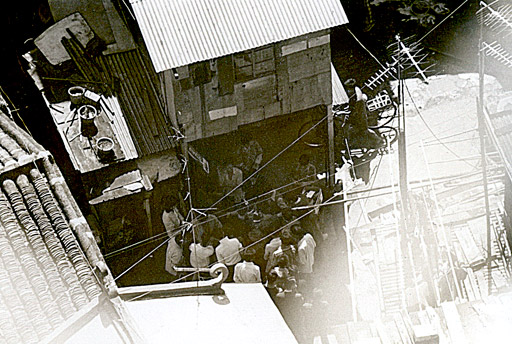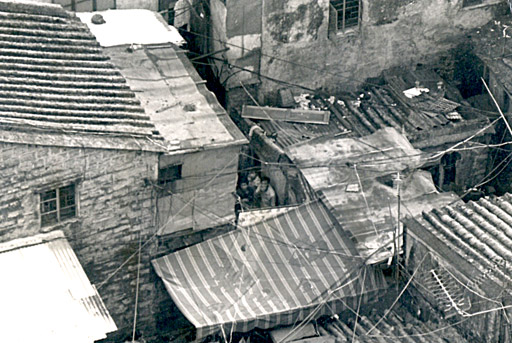A CLINIC FOR HEROIN

In the process of putting this new edition together we have interviewed a number of policeman who patrolled in the Walled City from as far back as the 1960s right up to the City’s clearance in the early 1990s. Their testimony has been enlightening and puts quite a different perspective on just how lawless or otherwise the City might have been at different times in its development.
Indeed, all of those we interviewed were keen to emphasise that, from the early 1960 onwards at least, the City was little different to other working class areas of Hong Kong. We are only sorry that we haven’t been able to track down any police officers who may have patrolled there in the 1950s, when by all accounts the Walled City really did live up to its reputation. If anyone reading this does know of such a person, we would love to hear from them. See BE INVOLVED under ‘The Book’ section for contact details.
None of this is to say that the Walled City didn’t have its moments and one of the more unusual stories that came to light while talking to one particular policeman who served there in the late 1970s was his memories of what he described as heroin clinics. The timing is important, as this occurred just a few years after the formation of the ICAC (the Independent Commission Against Corruption), which had clamped down heavily on both the Triad’s operations and corruption in the police force.
This resulted in the Walled City becoming once more an important centre for drug dealing. Such activity had never been eradicated from the City. Indeed, it was one of the few places where the very worst addicts could eke out some sort of existence without too much interference. The ordinary residents didn’t particularly approve of their presence, but for the most part they were ignored. In this, the City was not alone and there were several other locations in Hong Kong well known to the police where such activity went on.
In the late 1970s, however, there was a noticeable rise in drug dealing that the police were keen to bring under control. The problem, as always, was catching drug dealers in the act. The few entrances into the City made it impossible to enter without being spotted, and once inside it was all too easy for the perpetrators to disappear into the maze of alleys and stairways. Not so the addicts, however, who became an important source of information for the police when planning future operations.
There was one important catch however: addicts could only be arrested and taken in for questioning if they were actually caught carrying drugs. Being an addict alone was not enough. Aware of this the Triad operators, safe in the knowledge that the Walled City provided ideal cover, came up with the simple plan of rather than just selling addicts small packets of heroin, they would spread the word and open a temporary ‘clinic’ where the addicts could queue for their ‘shot’ and then leave, carrying nothing.
By the time the police realised what was going on and had gathered in sufficient numbers to carry out a raid, those involved had almost invariably left the scene. The two photographs shown here were taken from surrounding roofs as part of a surveillance operation and show a clinic in action (above), as well some of the lookouts (below) guarding one of the nearby alleys.
As an interesting aside, it is important to note that police raids of this sort were almost always carried out in sufficient numbers to ensure that as many of the escape routes could be covered as possible. As such, their presence was far more noticeable than the ordinary two-man foot patrols – whose presence was so common as to be unremarked upon – and one can only speculate if this is what led many to believe that the police only entered the Walled City in large numbers. This, it seems, is how myths are born.
